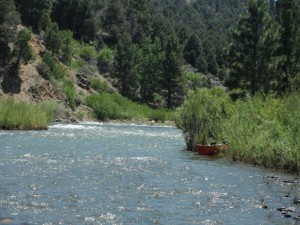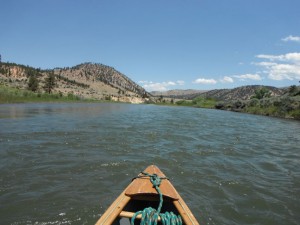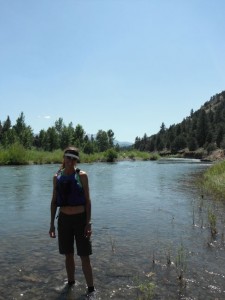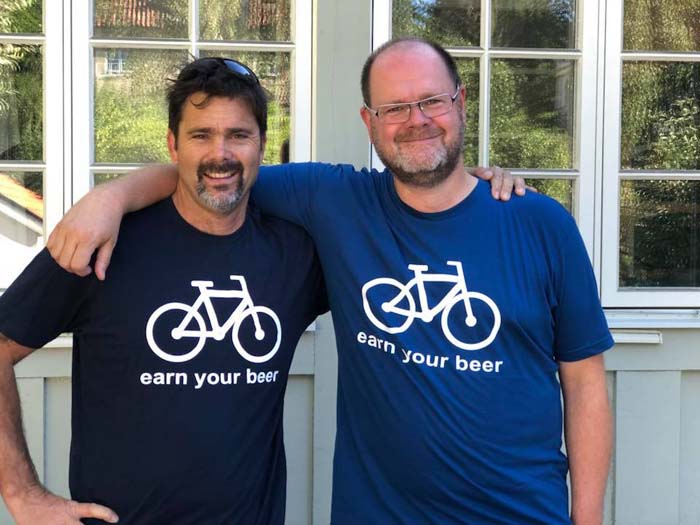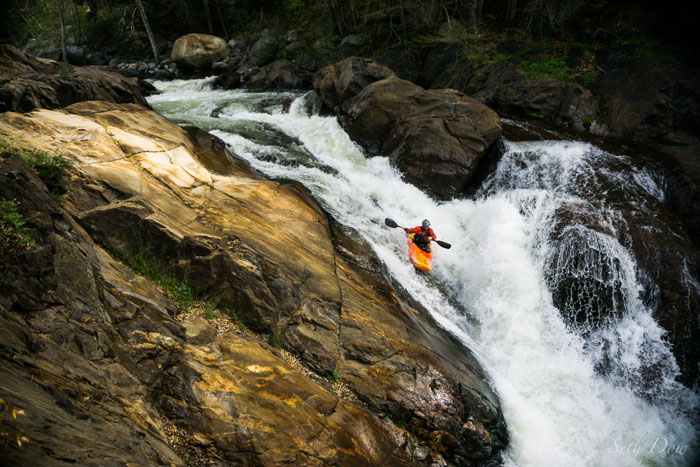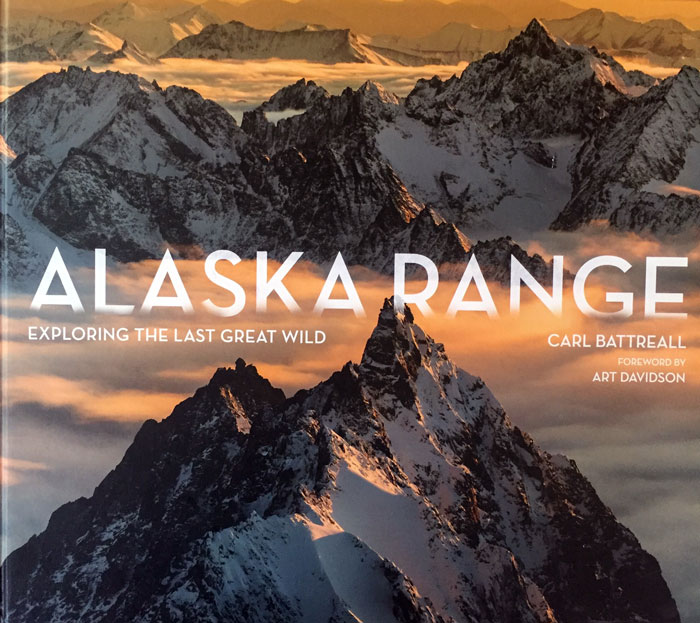- Tahoe’s Nevada Beach Tops the List of Hard-to-Book Campgrounds - 07/17/2024
- Cannabis Watershed Protection Program Cleans Up Illegal Grow Sites - 07/10/2024
- French Fire - 07/05/2024
Story and photos by Gretchen Brugman
When you paddle rivers in California, people assume you use one of two modes of transportation: kayak or raft. It’s a fairly safe hypothesis, since no one here takes canoes through whitewater. Canoes are for kids at camp, or people from Maine and Minnesota. So when my husband Andrew and I decided to canoe the East Fork Carson River, we received some raised eyebrows from several friends. “It’s a fun kayak,” their faces said, or, “I own a raft you know. You’re welcome to borrow it.
We are both experienced canoeists though, and Andrew, having rafted the river twice, assured me it was an ideal experience for veteran paddlers.
The East Fork of the Carson River travels from the alpine forests of the Sierra Nevada dropping down through rocky outcroppings and a changing landscape to the sand and sagebrush of the Nevada desert. This class II river is popular as a relaxing weekend paddle for boaters (primarily of the raft and kayak persuasion). Paddling the East Fork in an open boat canoe, with no spray skirt or floatation, added just the element of uncertainty we liked to keep things exciting.
We put in late on a Saturday morning at Hangman’s Bridge, just past the town of Markleeville. The East Fork is best paddled in April or May, when the spring runoff inflates the flows to a navigable level. With the previous winter’s snowpack at nearly twice the average volume however, we took advantage of the opportunity to head off for a summer paddle in mid-July.
The sun beat down as we unstrapped our orange Mad River from the top of my dusty Subaru and portaged it, along with the gear, down to the water’s edge.
I stood knee-deep in the current holding the boat as Andrew heaved a portage pack full of dry bags into the center of it. I noted nervously that we would head immediately into a set of rapids.
“Um, do we need to scout this already?”
Andrew glanced downstream. “We can pretty much see it from here,” he shrugged.
Although I was confident in my canoeing skills, it had been several years since I’d paddled any whitewater. I was also always the first one of us to chicken out when faced with turbulent water.
I didn’t really want to start the trip being a chicken, so I went gamely along as we discussed our line, set it up, and hopped in. Paddles in the water, we were off!
I was on my knees, immediately sucked into the adrenaline rush of the whitewater experience. We cleared the small rapids with ease, and I realized with relief that I was only nervous because I hadn’t been in a boat for so long. That feeling was already fading, and I slipped comfortably into the rhythm of reading the river.
The beautiful thing about a canoe is that it is truly a vessel meant for wilderness travel. There is space for all kinds of gear and plenty of food. (Andrew and I once paddled a river in northern Canada for 40 days with no resupply.) A skilled paddler can navigate some fairly challenging rapids. When rapids are too big or technical, you can line your canoe by using the bow and stern lines to steer the boat while walking safely along the shore. This is particularly useful because it doesn’t require unloading or carrying any gear. And when all else fails, you can portage your canoe.
You can pick it up, set it on your shoulders, and walk for miles.
It was that knowledge and experience that allowed me to be comfortable on a river little known to me. I knew, by one method or another, we could navigate the East Fork.
A number of things made this experience quite different from most of my previous river trips, and one of those was the consistency of the moving water. Because most of my canoeing experience is in remote areas with big consequences for tipping, I am used to scouting everything. If you scout everything on the East Fork, you’ll never get to camp before dark. There’s simply too much of it.
It took a few rapids for me to get used to it, but after about a half hour, we began simply navigating what came toward us, only occasionally stopping for a detailed scouting mission. Most of it was class I and easily paddled, and we knew, of course, that we could eddy-out at the last second if need be. We lined two sets, but otherwise paddled through. We employed a favorite canoe trick – the stand-up scout – whereby one of the paddlers stands in the boat for a better view of upcoming rapids while the partner keeps his paddle in the water to aid stability. It’s a great method for straightforward, class I rapids, and we used it liberally on the East Fork.
The other feature that made this river unique to me was the surrounding mountain scenery. I couldn’t help but turn around to gawk at the snow-covered peaks as they receded behind us. Rarely do you get such a panoramic view of mountains while floating on a river.
There were a couple rafts on the water, and we waved as they drifted lazily by. In contrast to their casual attitude, we had to remain alert most of the day. Sections of the river that could simply be floated by a large raft required us to be on our knees, steering the boat around various hazards. We worked together side slipping, ferrying, eddying in and out, calling out rocks, and indicating the best lines with a few words and gestures. I smiled as long dormant skills, and long dormant muscle groups, came to life.
Camping on the East Fork is a special pleasure, as there are hot springs at almost exactly the halfway point of the 20-mile trip. You could easily reach the take-out in one day, but why would you want to?
We pulled our boat over just past the first pool on river left. There are more campsites and pools past Sidewinder, the large set of rapids at the S-bend there, but we preferred the quiet of the first pool. After scouting a secluded campsite and setting up, we grabbed our towels and headed to the tub for a soak.
Our pool was located right on the river’s edge – hot water on one side, cold river on the other. This created excellent options for controlling the water temperature by scooping river water into the tub, or not. In case you’re wondering, kicking back with a few beers in a hot spring pool on the edge of a river is a brilliant way to end a day of paddling.
As often happens at hot springs, we made friends with some other river folk when a bachelor party of Tahoe ski patrollers joined us. You’ll never get the camping to yourself on a weekend here, but everyone was friendly. We shared stories and drinks, and as the sun sank low over the water, we soaked up the last rays of a glorious day.
The ample space in our canoe allowed us to eat well, and breakfast was a veggie egg scramble with bacon and coffee. We enjoyed a late start to the day, and made our one portage of the trip by putting in just past the Sidewinder rapid.
As the river descends, the water becomes gradually more gentle. Thus our second day gave us a bit more opportunity to kick back. We had time for a swim and a picnic on a sunny beach, and still made it to the take-out by early afternoon.
Every river has a different personality. The East Fork Carson River brought us the perfect mix of challenge and relaxation for a California mountain weekend.
If You Go:
Hangman’s Bridge put-in for the East Fork Carson is located on Highway 89 just south of Markleeville. Arrange a shuttle service to bring your car to the take out. We used Family Shuttle Service (530-694-2704). Pick up a map at the Alpine County Visitor’s Center in Markleeville. Fill out a wilderness permit if you’ll be camping. They’re free and available at the trailhead. Be prepared: Springtime weather is variable, snow is not uncommon, and water temperatures are frigid. Although the rapids aren’t as big as rivers on the west slope of the Sierra, the flow is swift with few recovery pools, the water icy, and the rocks sharp — so, if at all possible, don’t swim!
In addition to running rivers, Truckee-based writer Gretchen Brugman is an avid runner on land, from 5K races to 100-mile ultras. She writes about outdoor adventures at DailyAdventures.org.

